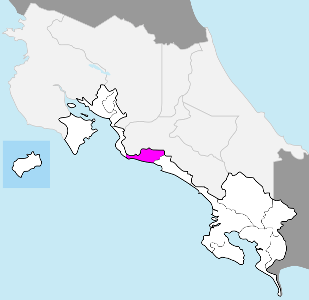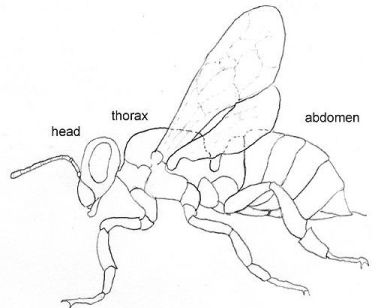Habitat
The genus in which H. argyraphaga is situated contains wasps that seem to occupy quite a large region covering much of South America, stretching from Mexico to Southern Brazil. Specifically, of the Hymenoepimecis species known, H. argyraphaga has only been seen and documented in the Puntarenas Province of Costa Rica, as shown in the Brazilian map below (Eberhard, 2000). In addition, its close relative H. robertsae lives and attacks spiders of the Nephila clavipes species in Panama (Sobczack, 2012).

Image accredited to: ArquiWHAT
Among the many organisms that also occupy
the dense rainforests of Costa Rica and other parts of Brazil, one
of the most easily recognizable insects are the army ants. Working
in incredibly large packs, army ants consume almost any small
creature that crosses their path, including spiders. Because of
this, army ants can be viewed as competition to the H.
argyraphaga wasp in utilizing spider species to their
benefit. Other insect species may not compete with this wasp for use
of the rain forests' spiders, but may still have similar eating
habits. Beetles, moths, butterflies, and crickets are just a few of
the other insects one may be able to view inhabiting the same areas
as H. argyraphaga (Moon handbooks, 2008).
Adaptations
Deep in the dense forests of
Costa Rica ecological webs which interconnect all of its organisms
can be intricate. Luckily, H. argyraphaga has become
well-suited to its environment and has found a fitting niche
specific to its needs. Looking at its classification, one can see it
branched from the insects, which allowed it to develop the
characteristic six-legged morphology due to activation of Ubx,
a Hox gene responsible for the suppression of leg
formation, setting it apart from its crustacean-like ancestors. Also, due to its ecdysozoan characteristics
given from its Arthropoda descent, molting --which is necessary to
allow continual growth-- in H. argyraphaga and all other
insects occurs with the release of ecdysone (a neurohormone) from
the prothoracic glands located in their brains. And for the
chemically-enthused individuals reading, the chemical structure of
this hormone is found below.
Arguably the most important attribute of this wasp exists as
its ability to fly. Not only does this allow it to travel swiftly,
but also aids in its ability to parasitize the P. argyra.
On the surface the wings of the insect may only be useful in terms
of locomotion, but think again! H. argyraphaga is in fact
an endothermic insect; as it flies with its strong wings, heat is
generated, elevating its body temperature. Oddly enough, these
insects have even been known to shiver in order to warm-up their
flight motors aka wings. The typical Hymenoptera morphology is shown
below.
To complement the vast amounts of oxygen
needed for flight in these insects, tracheal respiratory systems
were brought about by evolution. These systems bring oxygen directly
to the mitochondria found in the wing muscle cells through openings
to the outside of the organisms called tracheoles. In addition to
sensing their environment by mechanoreceptors found on their legs,
H. argyraphaga uses chemoreceptors --most usually found on its
antennae-- to get a better feel for its
environment. Certain molecules bind to these receptors causing
changes in membrane potential creating action potentials which leads
to the wasp getting a better grasp as to where it is situated
(Campbell et. al, 2008). In such a place as Costa Rica, the H.
argyraphaga needs and utilizes every one of its adaptations to
survive.
It's time to talk about the birds and the wasps...

